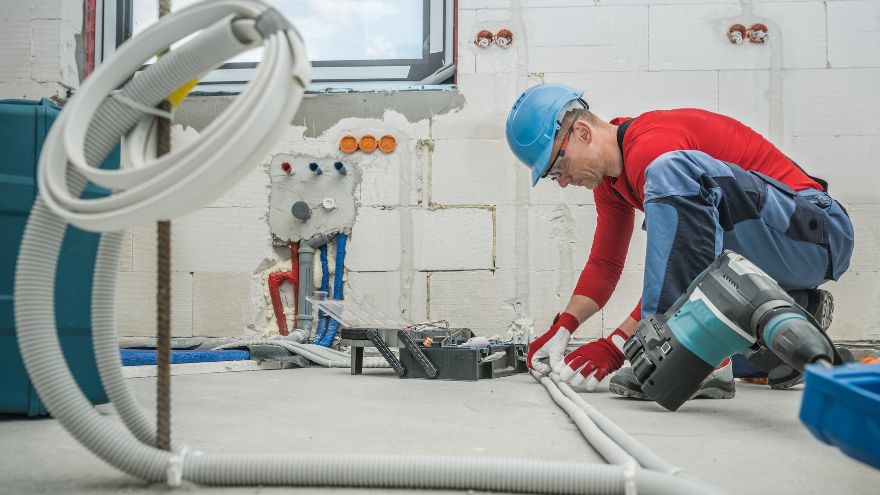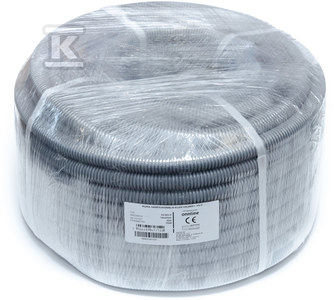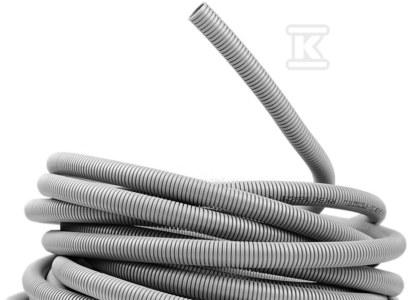The electrical installation must be properly protected, for example against moisture, high temperature or mechanical damage. An excellent choice here is a conduit , which is a corrugated electrical installation pipe . Today we will tell you whether it is better to choose a conduit with a remote control or without a remote control. We will tell you how to thread the cable.

Which solution is better? Conduit with or without a remote control?
Conduit pipes are cabled pipes used for laying electrical cables in walls or concrete floors. You can choose both a conduit with a remote control and without a remote control. It is worth knowing here that the remote control makes it easier to insert the cables without dividing the pipe into sections, while the model without a remote control is most often used when the length of the cable section does not exceed several meters. The conduit should be made of the highest quality materials, e.g. self-extinguishing PVC. It has a high class of mechanical resistance and works well at various temperatures. You can choose a corrugated pipe whose operating temperature ranges from minus 25 to 60 degrees Celsius or from minus 5 to 50 degrees Celsius. Time to move on to pulling the cables.
Check out the offer of conduits at the Onninen wholesaler
How to pull a cable through a conduit with a remote control?
 Pulling the cable through the conduit seems relatively difficult, but you can do it yourself. In this case, you need to attach the electrical wires to the remote control. You can connect one of the wires, but also remove the outer insulation of the cable, but this should be done very carefully so as not to damage it. It is worth covering the whole thing with tape so that the front of the cable does not get caught. Remember that the remote control cannot clamp on the veins.
Pulling the cable through the conduit seems relatively difficult, but you can do it yourself. In this case, you need to attach the electrical wires to the remote control. You can connect one of the wires, but also remove the outer insulation of the cable, but this should be done very carefully so as not to damage it. It is worth covering the whole thing with tape so that the front of the cable does not get caught. Remember that the remote control cannot clamp on the veins.
There is another solution. First, it is necessary to remove the external insulation from one wire. In the next stage, you also remove the insulation, but from the wire and bend it in half. You put a metal remote control inside. Of course, this is not the end of the work, because the remote control should be wrapped around the wire and along the insulation. You also can't pull the remote control too hard. The final stage of work is to connect all the elements with insulating tape. The work is similar if you want to pull several wires.
Drag lubricant is very useful. It is worth choosing one that is easy to apply. Threading electrical wires with the remote control should not lead to resistance. However, if there is a problem with pulling, you can prepare a string and then blow it into the pipe, although this is quite a risky solution. In such a case, it is recommended to insert it from the other side of the conduit, making rotational movements. For greater ease of operation, the spring ends can be lubricated with a little grease or dishwashing liquid. Bends may also cause problems with cable routing, so it is recommended to pull the steel wire into the conduit. The pipe must also be well tensioned, but not overextended. Pay attention to the arch itself, which should be gently inclined. You also need to choose the right remote control. It is worth choosing a carbon fiber remote control.
How to pull a cable through a conduit without a remote control?
 There is no need to use the remote control to pull the cable through the conduit. A wire with a diameter of 5 mm will be useful. It is best to choose a model that is used for tying reinforcement on the construction site. It should be at least one meter longer than the length of the conduit. Now bend the tip so that it is not too sharp. The wire should also be coated with grease, which will make it easier to pull it through the conduit. We would also like to remind you that this type of installation will work best when the conduit is not yet installed in the wall. If this is not the case and there are additional turns, the use of a remote control is justified.
There is no need to use the remote control to pull the cable through the conduit. A wire with a diameter of 5 mm will be useful. It is best to choose a model that is used for tying reinforcement on the construction site. It should be at least one meter longer than the length of the conduit. Now bend the tip so that it is not too sharp. The wire should also be coated with grease, which will make it easier to pull it through the conduit. We would also like to remind you that this type of installation will work best when the conduit is not yet installed in the wall. If this is not the case and there are additional turns, the use of a remote control is justified.
Every investor should know that there are various types of cable pulling ropes available. You can choose a perlon rope, which is made of reinforced perlon. It has steel tips and is easy to roll up. Also noteworthy is the steel cable used to pull in fish and tape cables. It is very solid and efficient. An interesting choice is the fiberglass model. The fiber is extremely flexible, but also resistant to bending or tearing. It also has a guide head that makes pulling the cable easier. If you are looking to hire an electrician, we have good news for you - you don't have to. Use our instructions and stay safe while working.